There are many different species of flowers name starting with T such as tulips, tiger lilies, thistle, thyme, and trumpet vine to name a few. Tulips are a popular spring flower and come in a variety of colors such as red, yellow, pink, and white.
Tiger lilies are known for their orange and black striped petals and bloom in the summer. Thistles are often seen as a weed but also have beautiful purple flowers that bloom in the summer. Thyme is an herb with small pink or purple flowers in the summer and is often used in cooking.
Finally, the trumpet vine has bright orange or red trumpet-shaped flowers that attract hummingbirds and bloom in the summer. All these flowers add color and beauty to gardens and can be enjoyed by nature lovers.
Flowers Name Starting with T
Tall Bearded Irises
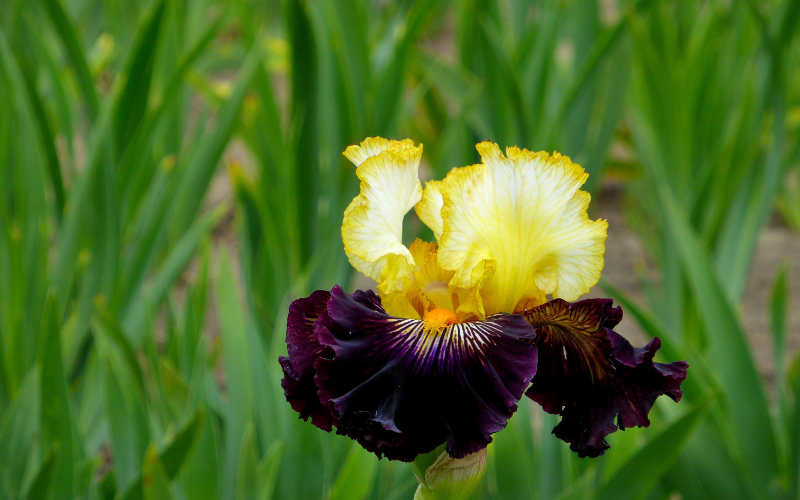
Tall bearded irises are one of the most popular and beautiful spring flowers. Purple, pink, yellow, and white irises are among the many colors available. They grow up to 3 feet tall and prefer full light and well-drained soil. Tall bearded irises have the advantage of being low-maintenance and easy to grow.
They require little watering once planted and can even withstand drought conditions. They are also excellent cut flowers, lasting up to a week in a vase. With their striking beauty and ease of care, it’s no wonder tall bearded irises are a favorite among gardeners and flower enthusiasts alike.
| Scientific Name | Iris germanica |
| Native Range | Southern Europe |
| Flowering Season | Summer |
Tall Kangaroo Paw
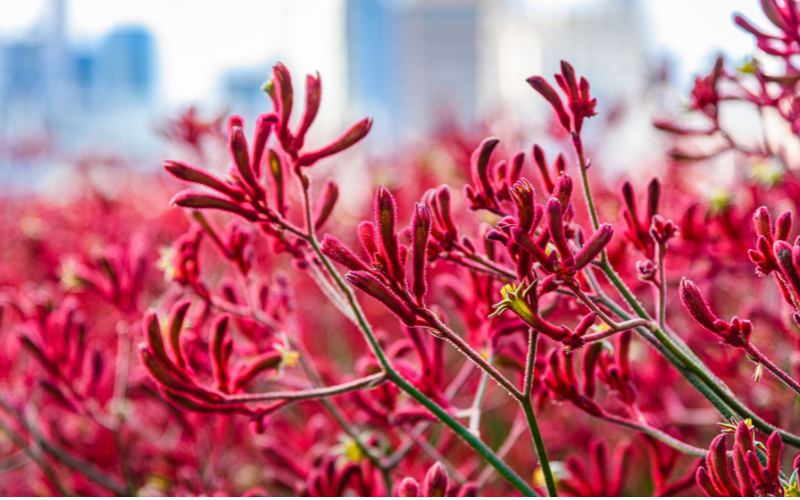
The Tall Kangaroo Paw is an amazingly beautiful plant that is native to the southwestern region of Australia. It gets its name from its unique blooms, which resemble kangaroo paws. The plant can grow up to 7 feet tall and produces long, narrow leaves that are a bright green color.
The flowers themselves are a vibrant shade of red or yellow and can grow up to 10 inches long. The Tall Kangaroo Paw is a popular choice for gardens and landscaping due to its unique appearance and ability to attract birds and other wildlife. It is also easy to care for, requiring little water and minimal pruning.
| Scientific Name | Anigozanthos flavidus |
| Native Range | Australia |
| Flowering Season | Late spring |
Tall Verbena
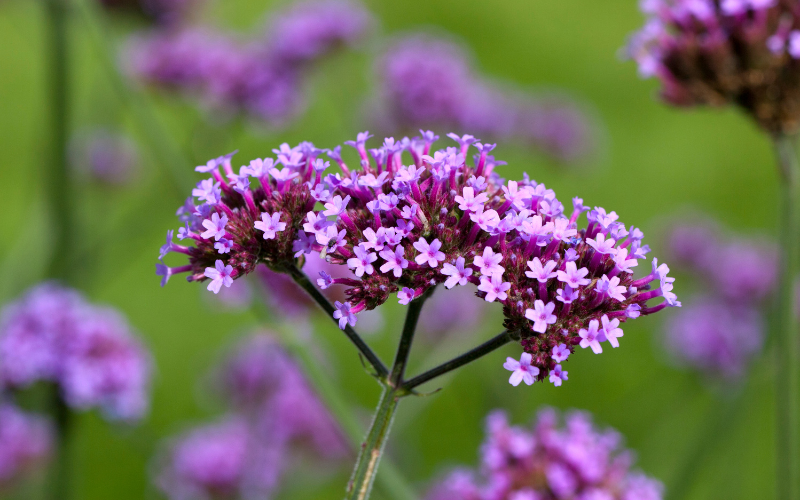
Tall Verbena is a beautiful flowering plant that is native to South America. It’s a favorite option among gardeners because of its eye-catching look and capacity to attract pollinators like butterflies and bees. It can grow up to 6 feet tall and produces clusters of small, fragrant flowers in shades of purple, pink, and white.
Tall Verbena prefers full sun and well-drained soil, and it is a relatively low-maintenance plant. It is perfect for adding height and color to a garden border or as a focal point in a mixed flower bed. If you’re looking for a beautiful and beneficial addition to your garden, Tall Verbena is definitely worth considering.
| Scientific Name | Verbena bonariensis |
| Native Range | South America |
| Flowering Season | Summer |
Tartarian Aster

Tartarian Aster, also known as Callistephus chinensis, is a beautiful plant that is native to Asia and is widely grown for its showy flowers. The plant grows to a height of about 2 to 3 feet and produces a profusion of daisy-like flowers in colors ranging from white to pink, purple, lavender, and blue.
These flowers bloom in late summer and early fall, making them a popular choice for gardens and floral arrangements. Tartarian Aster is a hardy plant that can thrive in a variety of soil types, but it prefers well-draining soil that is rich in organic matter. This plant requires full sun exposure and regular watering, but avoid overwatering as it can cause root rot.
| Scientific Name | Aster tataricus |
| Native Range | Asia |
| Flowering Season | Summer |
Texas Mountain Laurel
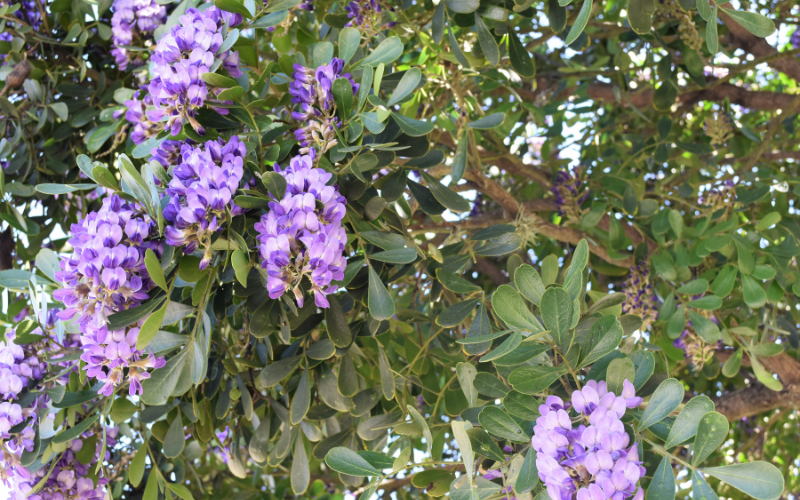
Texas Mountain Laurel is a unique and stunning plant that is native to the southwestern United States. This plant is well-known for its beautiful clusters of purple flowers that bloom in the late winter and early spring, making it a popular choice for gardens and landscaping.
The Texas Mountain Laurel also has an amazing fragrance that is reminiscent of grape Kool-Aid or even grape soda, which makes it an even more desirable addition to any outdoor space. The plant is also well-suited to the hot and dry conditions of the region, making it a hardy and low-maintenance choice for gardeners. Despite this, Texas Mountain Laurel remains a beloved and iconic plant in the southwestern landscape.
| Scientific Name | Sophora secundiflora |
| Native Range | Southwestern United States, particularly Texas, and parts of Mexico |
| Flowering Season | Spring |
Thimbleweed
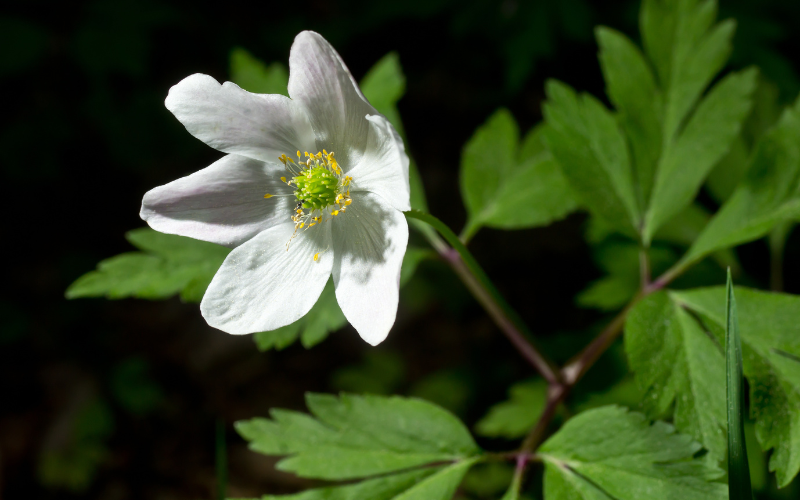
Thimbleweed is a beautiful flowering plant from the buttercup family. Its scientific name, Anemone virginiana, relates to the gentle swaying of its blooms in the breeze. This North American native can be found in meadows, woodlands, and along roadsides.
The Thimbleweed plant’s flowers are white and shaped like a thimble, hence the plant’s name. The green, deeply split leaves give a fascinating texture to any garden or environment. Thimbleweed has therapeutic qualities as well. For generations, the herb has been used to treat a range of diseases, including stomach, headaches, and rheumatism. Its roots can be used to make a tea that is said to help ease anxiety and promote relaxation.
| Scientific Name | Anemone virginiana |
| Native Range | North America |
| Flowering Season | Late spring to Early summer |
Thyme

Thyme flower, also known as Thymus vulgaris, is not only a beautiful and aromatic herb, but it also has many health benefits. This herb is native to the Mediterranean region and has been used for centuries as a natural remedy for various ailments.
Thyme flower contains compounds that have anti-inflammatory, antiseptic, and antioxidant properties, making it beneficial for boosting the immune system and reducing the risk of chronic diseases. The herb has a unique and delicious flavor that can enhance the taste of a variety of dishes, including soups, stews, and roasted vegetables. Thyme flower is also commonly used in herbal teas and essential oils.
| Scientific Name | Thymus vulgaris |
| Native Range | Greece, Italy, Spain, North Africa, specifically Morocco, and Algeria |
| Flowering Season | Summer |
Tickseed
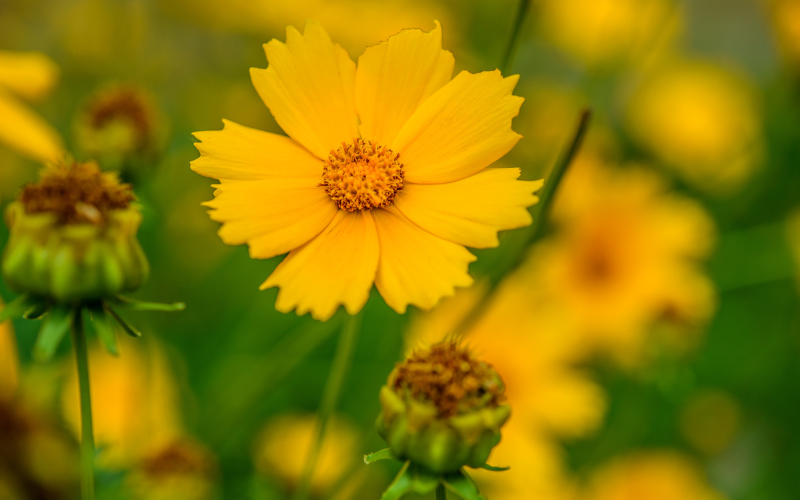
The Tickseed flower, also known as the Coreopsis, is a beautiful flowering plant that is native to North and South America. This plant is relatively easy to take care of and can be grown in a variety of climates, making it a popular choice for many gardeners.
The Tickseed flower comes in a range of colors, including yellow, pink, and red, and often has a distinctive dark center. These flowers are known for their bright colors and long bloom time, making them a great addition to any garden, whether you are looking to add color to your landscape or just enjoy the beauty of nature. In addition to their aesthetic value, Tickseed flowers also attract a wide variety of pollinators, including bees and butterflies, making them an important part of any ecosystem.
| Scientific Name | Coreopsis |
| Native Range | North America |
| Flowering Season | Late spring to Late summer |
Toad Lily
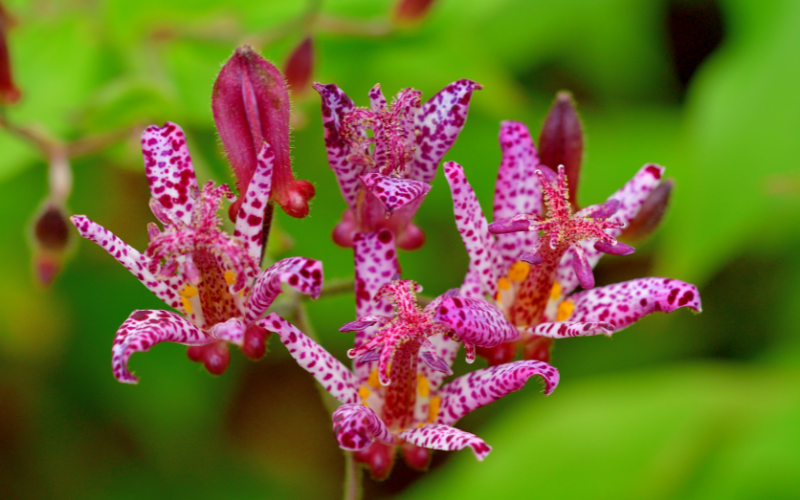
The Toad Lily flower, also known as Tricyrtis, is a distinctive and exotic-looking Asian flower. With its elaborate and delicate design, the blossom is a sight to behold.
It has a star-shaped appearance, with white or pale pink petals and striking purple dots. These spots add to the flower’s attractiveness, making it a popular choice for gardeners looking to add color and intrigue to their gardens. The Toad Lily is a hardy plant that grows well in shade and is an excellent addition to any woodland garden. It blooms in late summer or early autumn and lasts for several weeks.
| Scientific Name | Tricyrtis |
| Native Range | Asia, including Japan, China, and Taiwan |
| Flowering Season | Late summer or early fall |
Transvaal Daisy
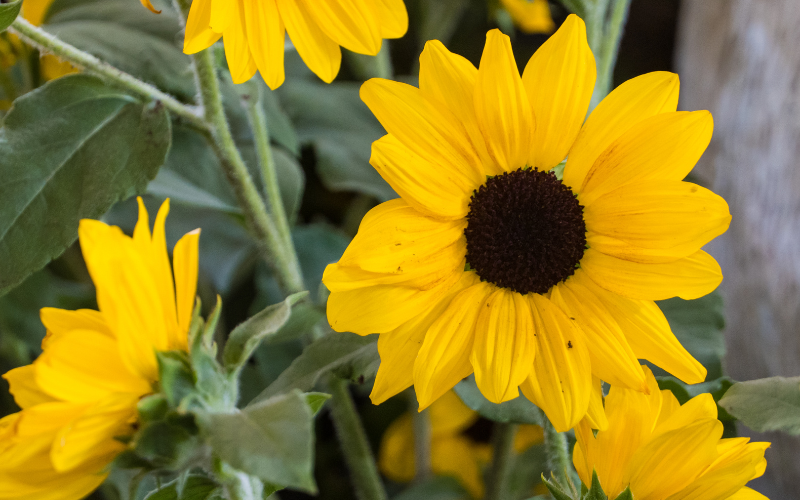
Transvaal Daisy is a beautiful and popular flower that is native to South Africa. It is known for its beautiful, large, daisy-like flowers in a range of bright colors, including pink, white, yellow, orange, and red.
In addition to their beauty, Gerbera daisies are also known for their symbolism. They are often associated with happiness, joy, and cheerfulness, and are commonly given as gifts for birthdays, anniversaries, and other special occasions. With proper care, Gerbera daisies can bloom continuously throughout the year, making them a favorite among gardeners and flower enthusiasts alike. They prefer well-drained soil and partial sun, making them perfect for growing in pots or in the garden.
| Scientific Name | Gerbera jamesonii |
| Native Range | South Africa |
| Flowering Season | Spring and summer |
Tall Bellflower
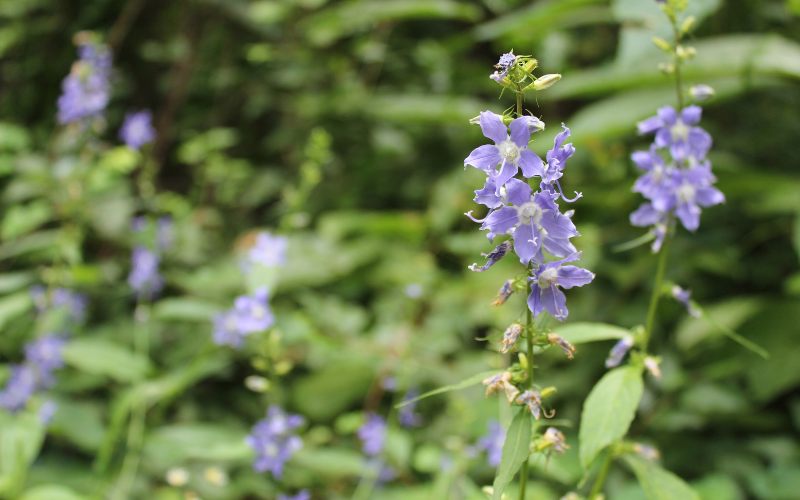
The Tall Bellflower is a stunning flower. It is scientifically known as Campanula americana. It is native to parts of Europe, including central and southern regions, and it is also found in some areas of Asia.
The flowers have five fused petals and are typically blue or purple, although some varieties may have white or pink blooms. The tall Bellflower is a relatively tall plant, growing to heights of 2 to 5 feet (60 to 150 centimeters) or even taller under the right conditions.
| Scientific Name | Campanula americana |
| Native Range | Eastern North America from New York and southern Ontario to Minnesota south to Florida, Alabama, Arkansas ,and Oklahoma |
| Flowering Season | Summer |
Tennessee Coneflower
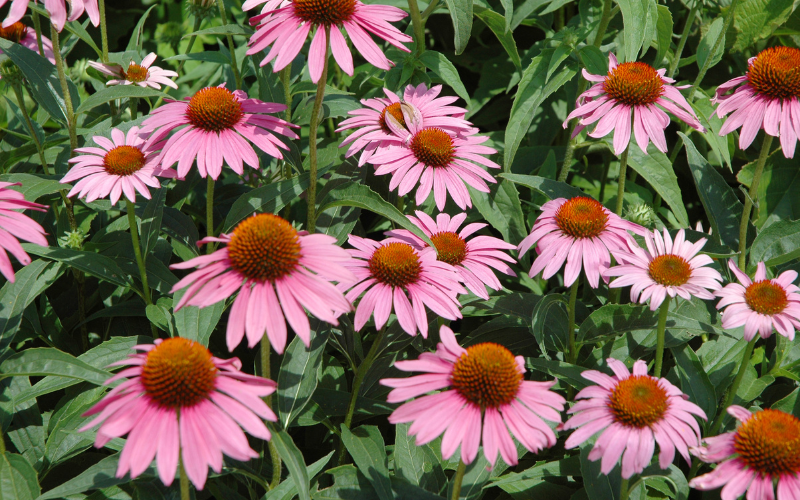
Tennessee Coneflower is a beautiful flower. It is scientifically known as Campanula latifolia. It is native to the state of Tennessee in the United States.
The flowers have five fused petals and are typically blue or purple, although some varieties may have white or pink blooms. The tall Bellflower is a relatively tall plant, growing to heights of 2 to 5 feet (60 to 150 centimeters) or even taller under the right conditions.
| Scientific Name | Echinacea tennesseensis |
| Native Range | Certain glades near Nashville, Tennessee |
| Flowering Season | Late spring to early summer |
Tetraploid Daylily
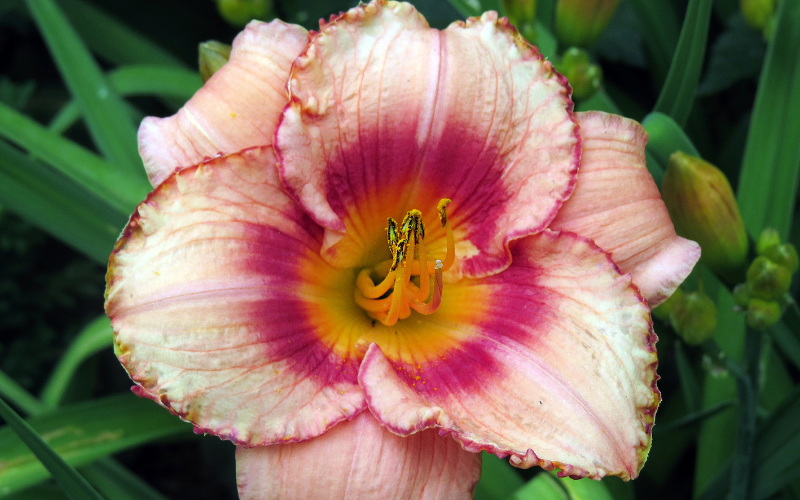
The tetraploid daylily flower is a fascinating and unique flower. These vibrant flowers come in a variety of dazzling colors, including vibrant oranges, deep purples, and vivid yellows.
The tetraploid daylily usually grows to a height of around 24-26 inches (60-65 cm). It is low-maintenance and can thrive in a variety of soil types, as long as the soil is well-draining.
| Scientific Name | Hemerocallis ‘Respighi’ |
| Native Range | Asia, primarily eastern Asia, including China, Korea, Japan, and southern Siberia |
| Flowering Season | Late spring or late summer |
Thelocactus
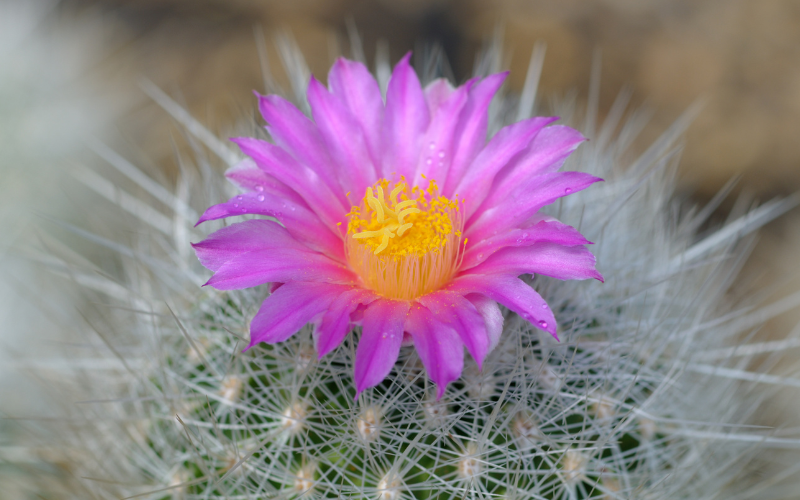
The Thelocactus flower is a beautiful and unique species. It is native to Mexico and parts of the southwestern United States. It comes in shades of pink, magenta, purple, white, and yellow.
Some species may have bi-colored or multi-colored flowers. Thelocactus flowers typically bloom during the spring and sometimes into early summer. They require well-draining soil and ample sunlight.
| Scientific Name | Thelocactus |
| Native Range | Texas to Mexico |
| Flowering Season | Late spring early summer |
Threadleaf Coreopsis
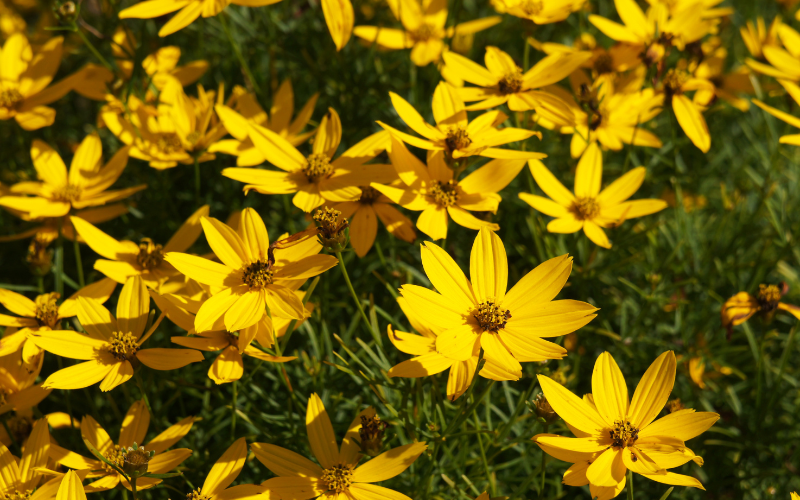
The Threadleaf Coreopsis is a stunning and vibrant flower. It is also known as Coreopsis verticillata. It is native to North America. Threadleaf Coreopsis comes in various colors, including shades of yellow, gold, and sometimes even pink or red.
It typically blooms from late spring to mid-summer, depending on the local climate and growing conditions. Threadleaf Coreopsis can reach a height of about 1 to 2 feet (30 to 60 centimeters) with a spread of about 1 to 2 feet (30 to 60 centimeters).
| Scientific Name | Coreopsis verticillata |
| Native Range | North America |
| Flowering Season | Late spring to early fall |
Treasure Flower

Treasure Flower is a vibrant and colorful flowering plant. It is scientifically known as Gazania rigens. It is native to South Africa. Treasure Flowers come in a wide range of colors, including shades of orange, yellow, pink, red, and white.
It typically blooms during the spring and summer months. Treasure Flowers are generally low-growing that reach a height of about 6 to 12 inches (15 to 30 centimeters) and spread to around 12 to 18 inches (30 to 45 centimeters).
| Scientific Name | Gazania rigens |
| Native Range | Southern Africa |
| Flowering Season | Spring, summer |
Tree Peony
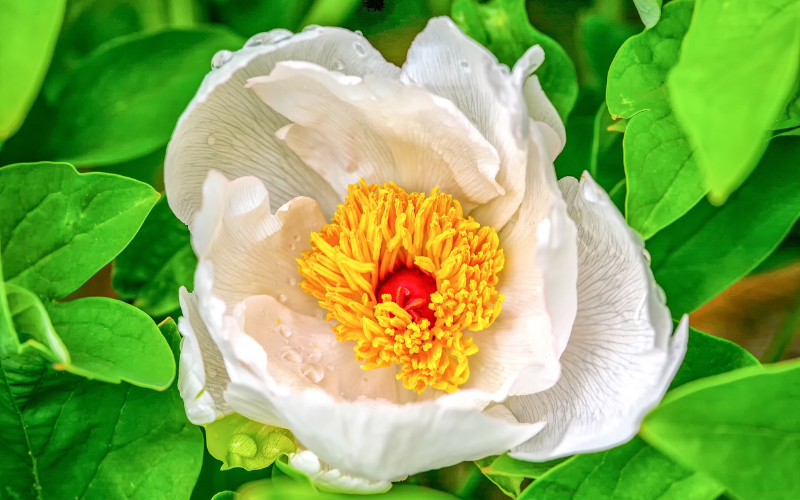
The tree peony flower is known for its exquisite beauty. It is scientifically known as Paeonia suffruticosa . They are native to Asia, particularly China and Japan.
Tree Peonies come in a wide array of colors, including shades of white, pink, red, purple, and yellow. The flowers of Tree Peonies are among the largest of all peony species, often measuring up to 6-10 inches (15-25 centimeters) in diameter.
| Scientific Name | Paeonia sect. Moutan |
| Native Range | Asia, Europe, and Western North America |
| Flowering Season | Late spring to early summer |
Tree Sonchus
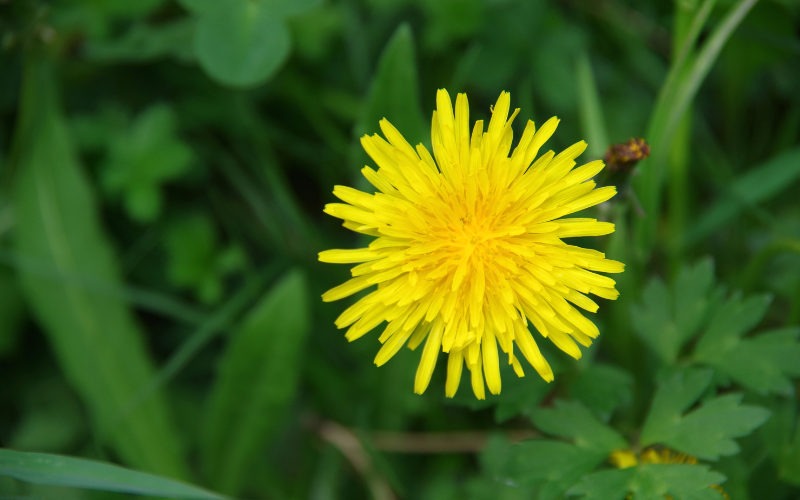
The Tree Sonchus flower is a beautiful and unique plant. It is also known as the Tree Dandelion. The Tree Sonchus flower is native to the Mediterranean region. The Tree Sonchus flower blooms in early to mid-summer.
It also attracts a variety of pollinators, such as bees and butterflies, with its sweet nectar. The Tree Sonchus flower adds a touch of whimsy and natural beauty to any outdoor space.
| Scientific Name | Sonchus |
| Native Range | Eurasia and Tropical Africa |
| Flowering Season | Spring |
True Forget-Me-Not
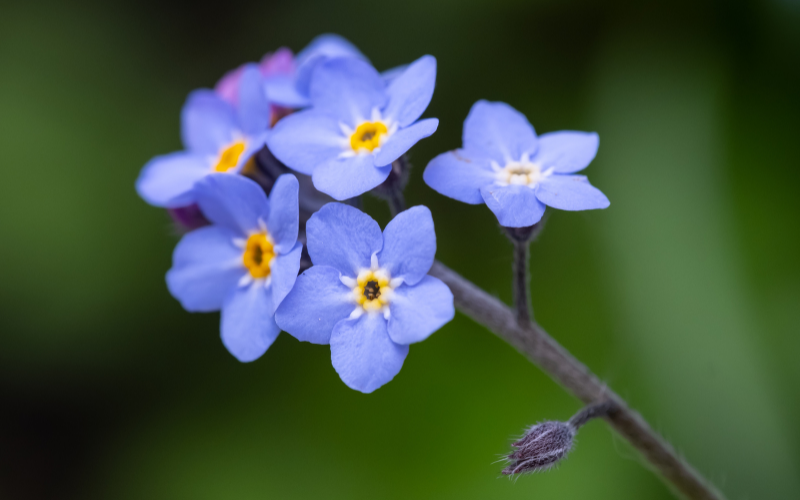
The True Forget-Me-Not is a beautiful flower. It is scientifically known as Myosotis sylvatica. It is native to Europe. True Forget-Me-Not blooms in the spring and early summer.
The flowers are relatively small, typically around 0.2 to 0.4 inches (5 to 10 millimeters) in diameter. True Forget-Me-Not thrives in moist to wet soil and partial shade.
| Scientific Name | Myosotis scorpioides |
| Native Range | Eurasia |
| Flowering Season | Summer |
Tuberous Begonia
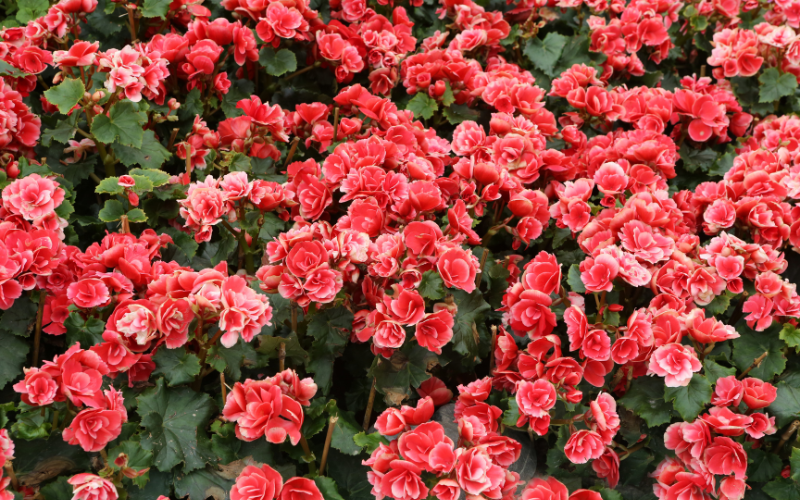
Tuberous begonias is a beautiful flower. They are a hybrid species derived from various South American Begonia. Tuberous Begonias are commonly used in containers, hanging baskets, and garden beds to add color and interest to outdoor and indoor spaces.
Tuberous Begonias are available in various colors, including shades of red, orange, yellow, pink, white, and bi-color combinations. Tuberous Begonias typically bloom from late spring to early fall.
| Scientific Name | Begonia × tuberhybrida Voss |
| Native Range | South America and Southern Africa |
| Flowering Season | Summer |
Turtlehead
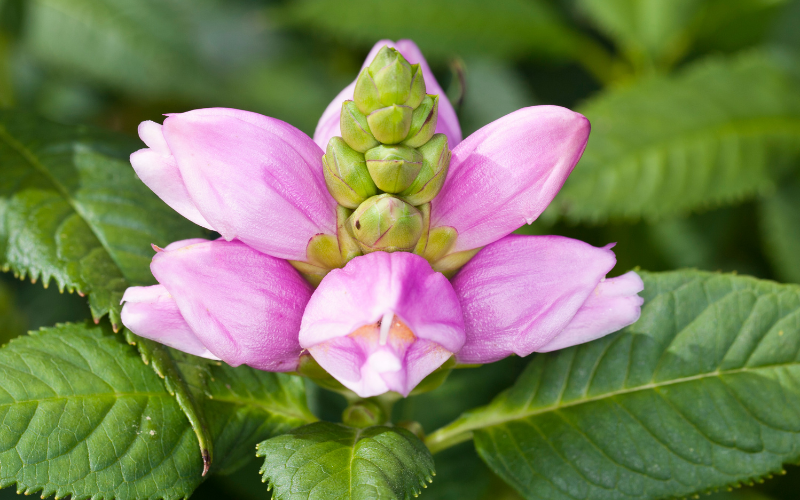
Turtlehead, or Chelone, is a special flower of the Plantaginaceae family. Native to North America, it ranges from deep purples and pinks to white in color. Blooms in late summer and early fall prefer moist, well-drained soil, and can reach a height of 4 feet.
Turtlehead has lance-shaped, glossy green leaves that make a beautiful backdrop for the unique turtle-like flowers. Two petals fused together to form a hood-like structure give the blooms a unique shape. The design is meant to attract pollinators such as bees and butterflies, which can only obtain nectar by pushing its way into the “mouth” of the flower.
| Scientific Name | Chelone |
| Native Range | Georgia to Newfoundland and Labrador and from Mississippi to Manitoba |
| Flowering Season | Late summer to fall |
Tulip
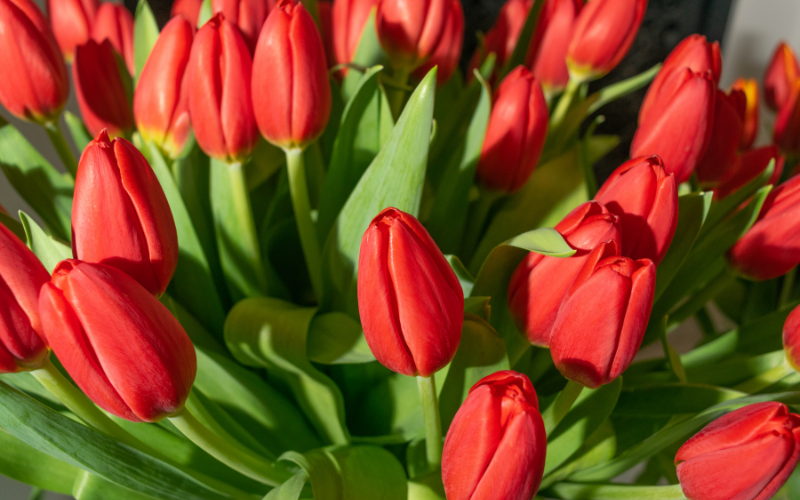
The tulip, a beautiful flower, belongs to the Liliaceae family. Native to Central Asia and occur in a variety of colors such as red, yellow, pink, purple, and white. Blooms in the spring prefer well-drained soil and can reach a height of 2 feet.
Tulips are very lovely. When in full bloom, their petals are often cup-shaped, big, rounded, and velvety in texture, with tall, slender stems, producing a magnificent spectacle. Tulips continue to amaze and inspire with their graceful and stunning beauty.
| Scientific Name | Tulipa |
| Native Range | Central Asia and Turkey |
| Flowering Season | Spring |
Tiger Flower
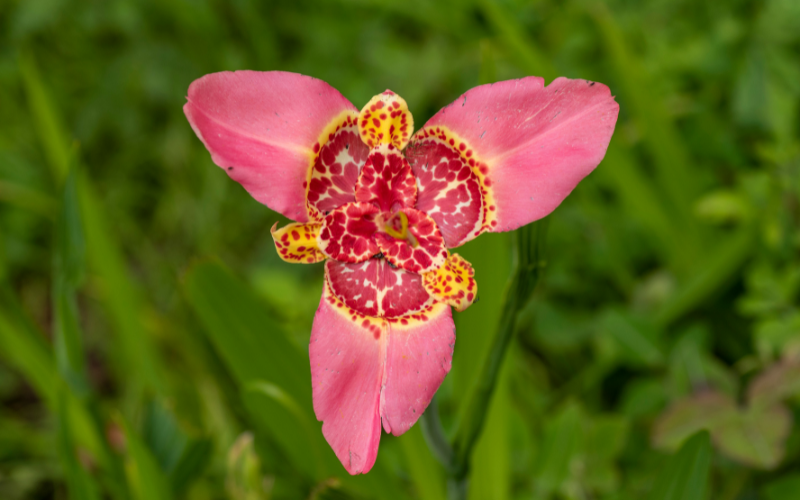
Tiger Flower, or Tigridia pavonia, is a fascinating plant of the Iridaceae family. Native to Mexico and Central America, it comes in a variety of colors, including red, pink, yellow, orange, and white. Blooms throughout the summer prefer well-drained soil and can reach a height of 3 feet.
Tiger Flower has petals that are gracefully formed and a large center stamen. Flowers with stunning patterns resembling tiger stripes come often. The Tiger Flower adds a touch of exotic beauty to any garden.
| Scientific Name | Tigridia pavonia |
| Native Range | Mexico to Chile |
| Flowering Season | Summer |
Toyon
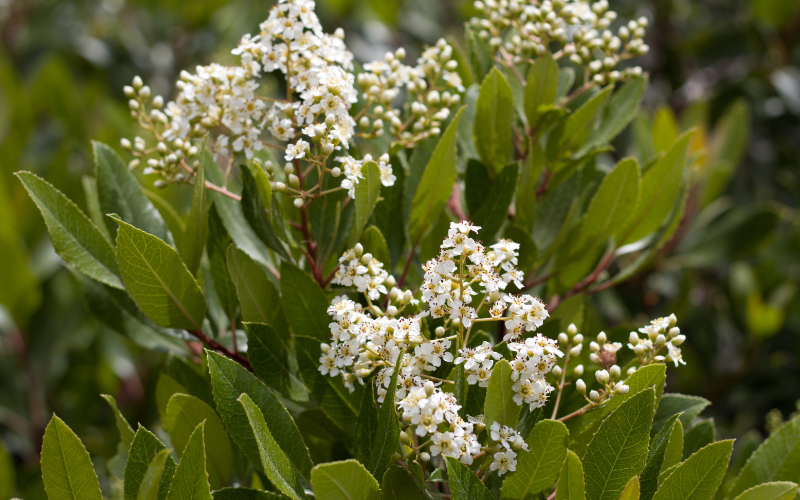
Toyon shrub, or Heteromeles arbutifolia, is a member of the rose family Rosaceae. Native to California this blooms during the summer months, with gorgeous clusters of small, creamy white flowers that eventually give way to vivid red berries, giving a stunning contrast against the glossy dark green leaves.
Toyon bush grows up to 15 ft. tall in well-drained soil. Toyon has glossy, dark green foliage that resembles holly leaves, with serrated margins, and bright red berries that offer food for birds and give a burst of color to the environment.
| Scientific Name | Heteromeles arbutifolia |
| Native Range | California |
| Flowering Season | Late spring into summer |
Tithonia
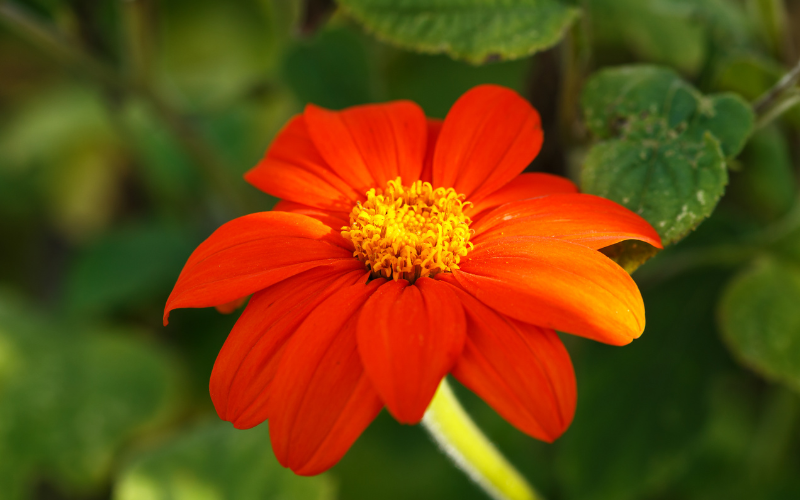
Tithonia, or Mexican sunflower, is an Asteraceae plant native to Mexico and Central America. This bright and eye-catching plant comes in a variety of colors, including stunning orange, red, and yellow hues.
Tithonia blooms for a long time, usually from midsummer until late fall. It grows up to 8 ft. tall and thrives in well-drained, nutritious soil. Tithonia is a striking addition to any garden or landscape, with its tall, robust stalks covered in vibrant blossoms.
| Scientific Name | Tithonia |
| Native Range | Florida, Louisiana, Mexico, Central America and the West Indies |
| Flowering Season | Summer, Fall |
Texas Nipple Cactus
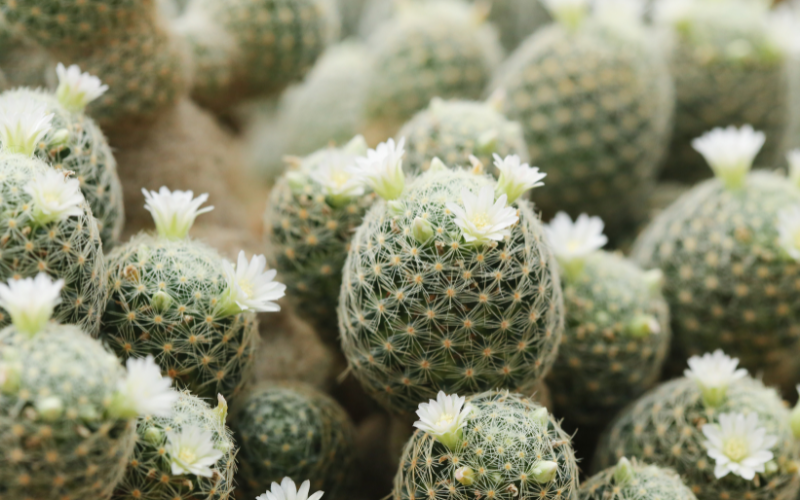
Texas Nipple Cactus, or Mammillaria heyderi, is a unique member of the cactus family. Native to the southwestern United States and northern Mexico, it blooms with gorgeous flowers that might be pink, white, or yellow. It blooms during the spring and summer months, enjoys well-draining soil, requires little water, and can grow up to 12 inches tall.
Texas Nipple Cactus has spiky spines and delicate petals. The tubes on stems have sharp, hooked spines that protect them from pests. Flowers are tiny and bell-shaped with green or bluish-green stems. The blooms lure pollinators, playing a key role in its growth cycle.
| Scientific Name | Mammillaria prolifera |
| Native Range | South Texas and northeastern Mexico |
| Flowering Season | Spring |
Tiger Lily
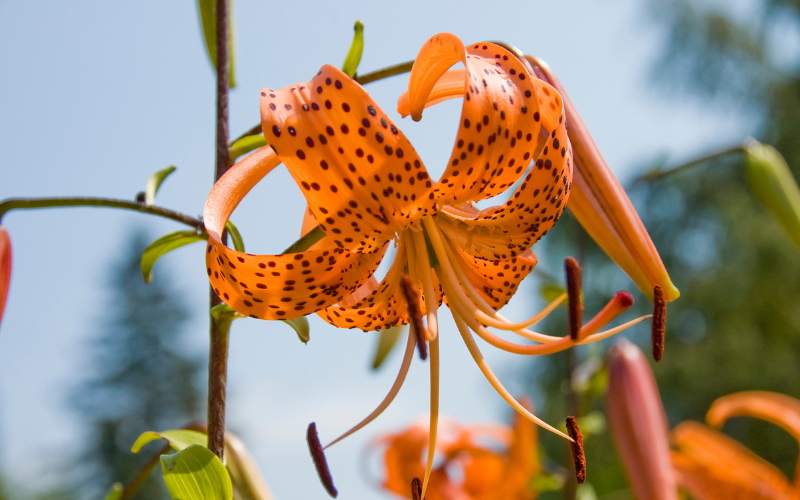
Tiger Lily, or Lilium lancifolium, is a colorful and attractive flower in the Liliaceae family. Native to Asia, these flower comes in orange, red, and yellow hues. Blooms in the summer prefer well-drained soil and can grow up to 4 ft. tall.
Tiger Lilies stalk bears many flowers, each with six petals that curve backward, giving the flower a lovely and rare appearance. The blossoms have a pleasant scent, which attracts bees, butterflies, and other pollinators to the garden, and are seen as a symbol of wealth, success, and good luck.
| Scientific Name | Lilium lancifolium |
| Native Range | China |
| Flowering Season | Summer |
Toadflax
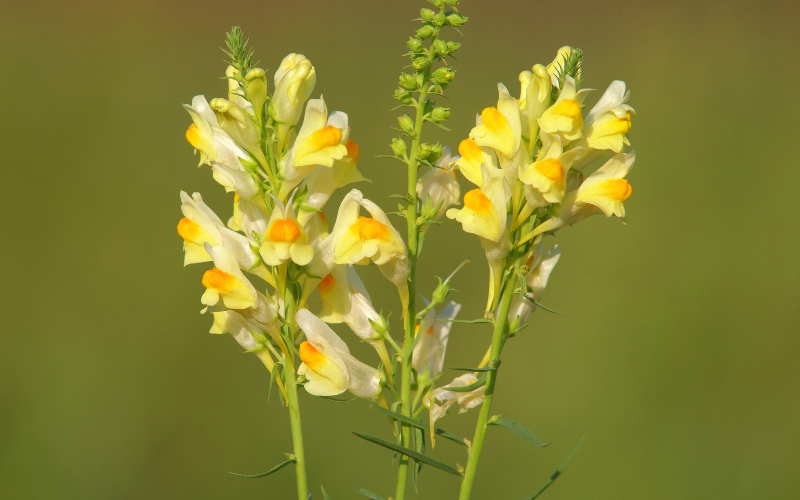
Toadflax, sometimes known as Linaria, is a fascinating plant in the Plantaginaceae family. Native to Europe and portions of Asia these come in yellow, pink, purple, and white. These bloom over the summer months and can grow up to 3 ft. tall in well-drained soil.
The stems of toadflax are thin and straight, with narrow, lance-shaped leaves. Its flowers have five petals and a snapdragon-like shape. Toadflax is a popular addition to gardens due to its unique appearance and adaptability.
| Scientific Name | Linaria |
| Native Range | Europe, Siberia and Central Asia |
| Flowering Season | Late spring to early autumn |
Trollius
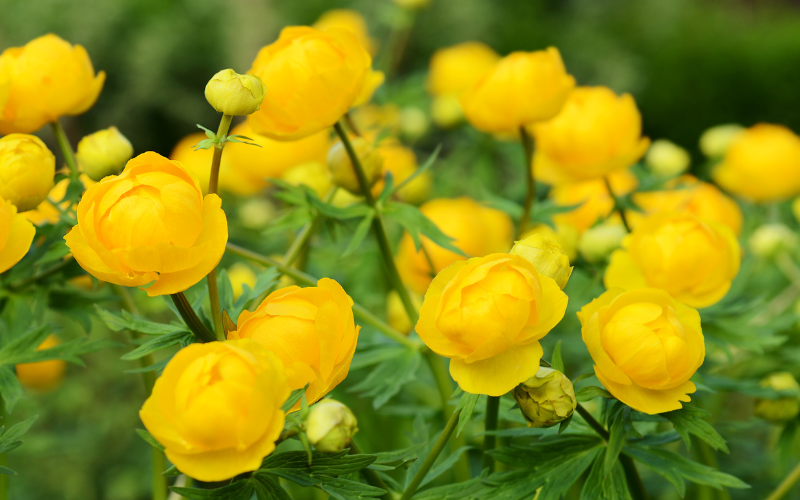
Trollius, or globeflowers, is an attractive and bright flower in the Ranunculaceae family. Trollius are native to Europe and Asia and occur in a variety of colors, including yellow, orange, and even deep red. Blooms from late spring to early summer prefer wet, well-drained soil, and can reach a height of 3 feet.
Trollius is an interesting addition to any garden or floral arrangement due to its unique appearance, which includes beautiful, globe-shaped flowers and deeply lobed leaves.
| Scientific Name | Trollius |
| Native Range | North America |
| Flowering Season | Mid-Summer |
Trumpet Vine
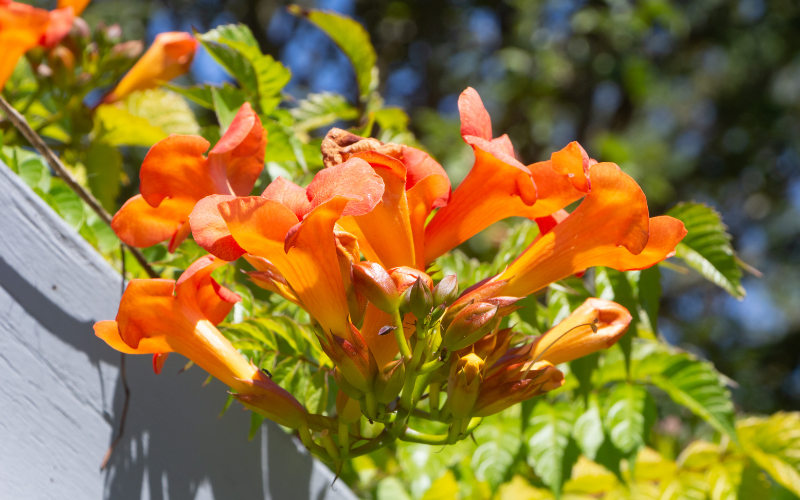
Trumpet Vine, or Campsis radicans, is a member of the Bignoniaceae family. Native to North America they appear in a wide spectrum of colors, including brilliant reds, oranges, and yellows. Blooms during the summer months prefer well-drained soil and can reach a height of 40 feet.
Trumpet Vine is identified by its dense foliage, consisting of multiple leaves with sharp edges. The dark green foliage stands out among the colorful flowers, attracting hummingbirds and butterflies with their nectar-rich blossoms.
| Scientific Name | Campsis radicans |
| Native Range | Southeastern U. S. including Missouri |
| Flowering Season | Summer |
Twinspur
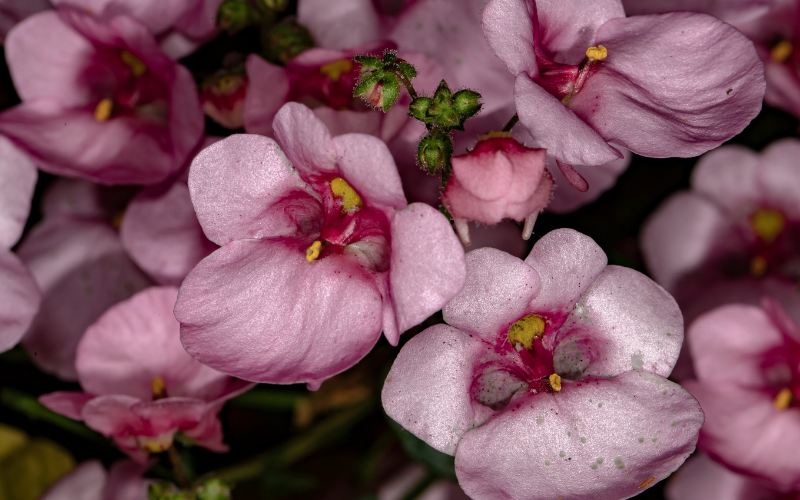
Twinspur is a beautiful flower. It is scientifically known as diascia. It is native to South Africa. The flowers come in a variety of colors, including shades of pink, red, coral, and white.
The flowers have long-lasting blooms and low maintenance requirements. Its resilience and versatility make it suitable for various climates, allowing it to thrive in both sunny and partially shaded areas.
| Scientific Name | Diascia |
| Native Range | South Africa and Lesotho |
| Flowering Season | Spring |
Toyon Shrub
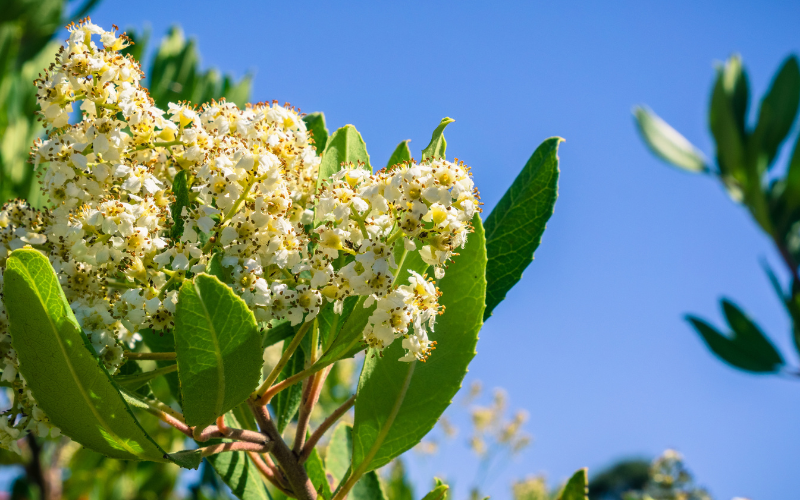
Toyon Shrub is a stunning flower. It is also known as Heteromeles arbutifolia. It is a native California. Toyon produces small, white to cream-colored flowers. Toyon Shrub bloom in clusters during late spring and early summer.
Toyon is a medium to large plant, often reaching heights of 6 to 10 feet (1.8 to 3 meters). The flowers are sure to bring joy and natural splendor to any outdoor space.
| Scientific Name | Heteromeles arbutifolia |
| Native Range | California |
| Flowering Season | Summer |
Totem Pole Cactus
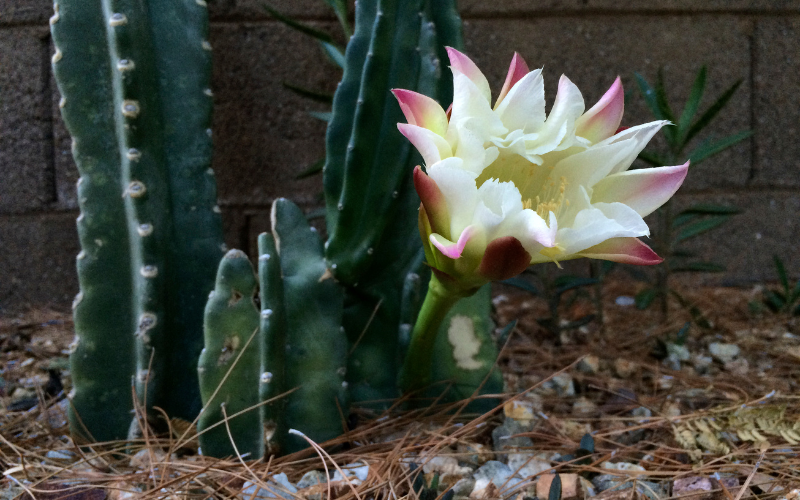
The Totem Pole Cactus is a truly mesmerizing plant. It is also known as Pachycereus schottii monstrosus. It is native to Mexico and the southwestern United States. The flowers come in a variety of colors, often ranging from creamy white to pale yellow.
It typically blooms during the spring and early summer months. The flowers can grow up to 20 feet (6 meters) or more in height.
| Scientific Name | Pachycereus Schottii Monstrosus |
| Native Range | Mexico |
| Flowering Season | Spring |
Tricyrtis macropoda
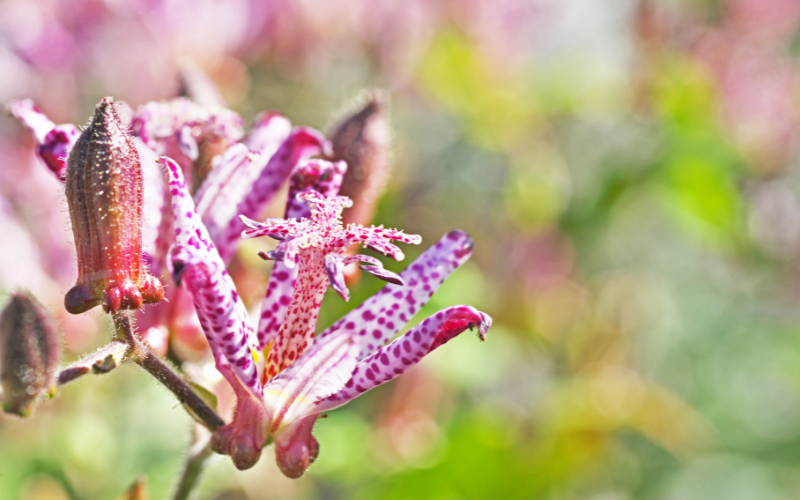
Tricyrtis macropoda is a lovely flower. It is commonly known as the “Toad Lily.” It is native to Japan. It is typically a pale shade of lavender or white. The flower blooms in late summer to early fall. It is relatively low maintenance, requiring a small amount and partial shade to thrive.
Toad Lilies thrive in moist, well-drained soil and are well-suited for woodland gardens, shaded borders, or as a potted plant. They prefer partial to full shade and benefit from regular watering during dry periods.
| Scientific Name | Tricyrtis macropoda |
| Native Range | China |
| Flowering Season | Summer |
Tricyrtis macrantha
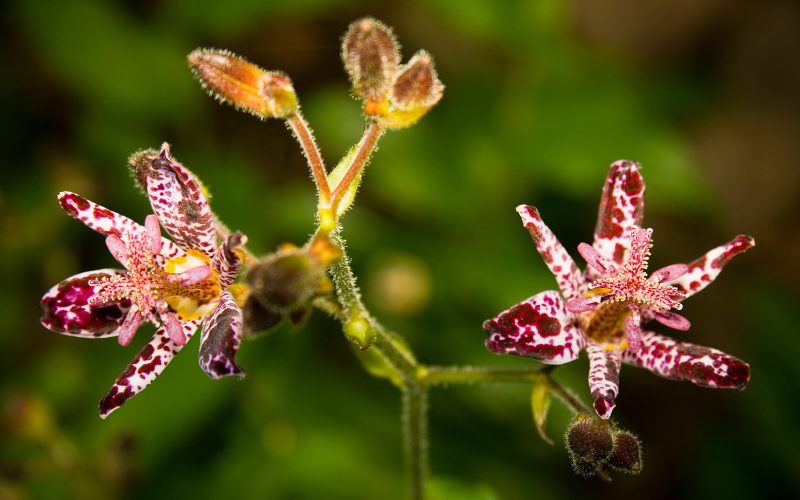
The Tricyrtis macrantha is a fascinating flower. It is commonly known as the “Japanese Toad Lily.” It is native to wooded areas and mountain regions in Japan. It prefers well-draining, moist soil and thrives in partial to full shade.
The flowers are small, typically 1 to 1.5 inches (2.5 to 4 centimeters) in size, and have a distinctive orchid-like appearance. Tricyrtis macrantha typically blooms in late summer to early autumn.
| Scientific Name | Tricyrtis macrantha |
| Native Range | Japan |
| Flowering Season | Late summer to early fall |
Tricyrtis hirta “Miyazaki”
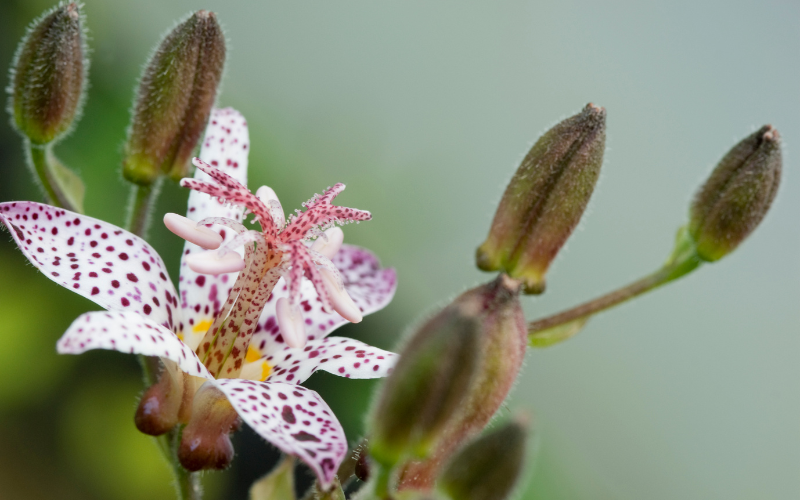
Tricyrtis hirta “Miyazaki” is a stunning and unique flower. It is native to woodlands and mountainous regions in Japan. These flowers are relatively small, typically measuring about 1 inch (2.5 centimeters) in size.
The flowers of the “Miyazaki” cultivar are typically a soft shade of lavender or lilac, with intricate speckles, spots, or streaks in darker purple or burgundy. It is typically blooms in late summer to early autumn.
| Scientific Name | Toad Lily ‘Miyazaki Hybrids |
| Native Range | Japan |
| Flowering Season | Late summer to early fall |
Tricyrtis formosana
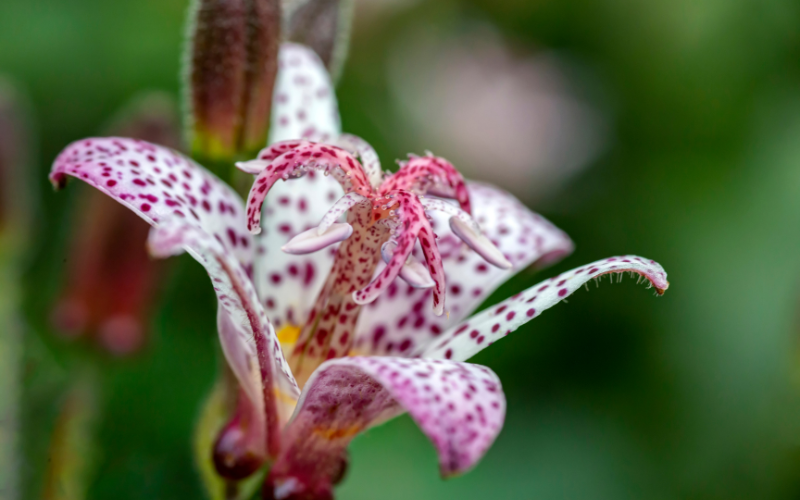
Tricyrtis formosana is a beautiful flower. It is commonly known as the Formosan Toad Lily. It is native to Taiwan. The flowers are typically around 1 to 1.5 inches (2.5 to 3.8 centimeters) in size and have a distinctive appearance.
The flowers of Tricyrtis formosana are usually white to light lavender or lilac, adorned with dark purple spots, streaks, or speckles. Toad Lilies thrive in moist, well-draining soil and are well-suited to partial to full shade conditions.
| Scientific Name | Tricyrtis formosana |
| Native Range | Taiwan |
| Flowering Season | Late summer to early fall |
Tickseed (Coreopsis palmata)
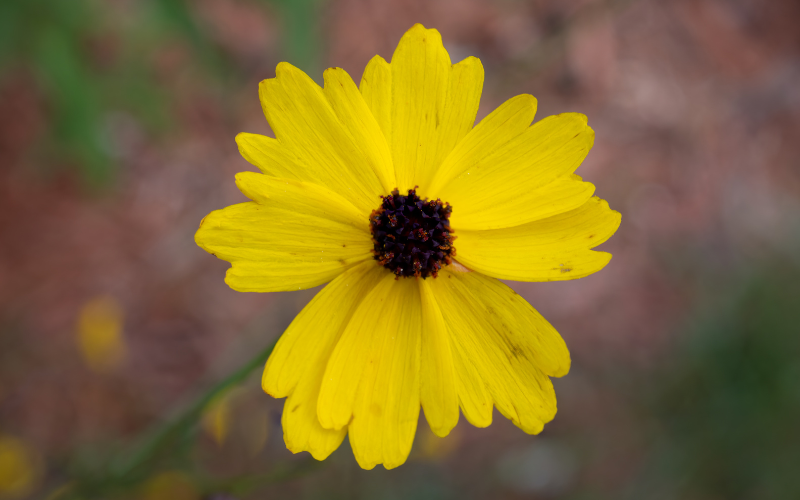
The tickseed is a stunning flower. It is scientifically known as Coreopsis palmata. It is native to North America. Tickseed produces vibrant and daisy-like flowers that typically have a diameter of 1.5 to 2 inches (3.8 to 5 centimeters).
Tickseed flowers typically bloom from late spring through early summer. It prefers well-drained soil and full to partial sun.
| Scientific Name | Coreopsis palmata |
| Native Range | Southeastern United States |
| Flowering Season | Late spring to early summer |
Tickseed (Coreopsis pubescens)
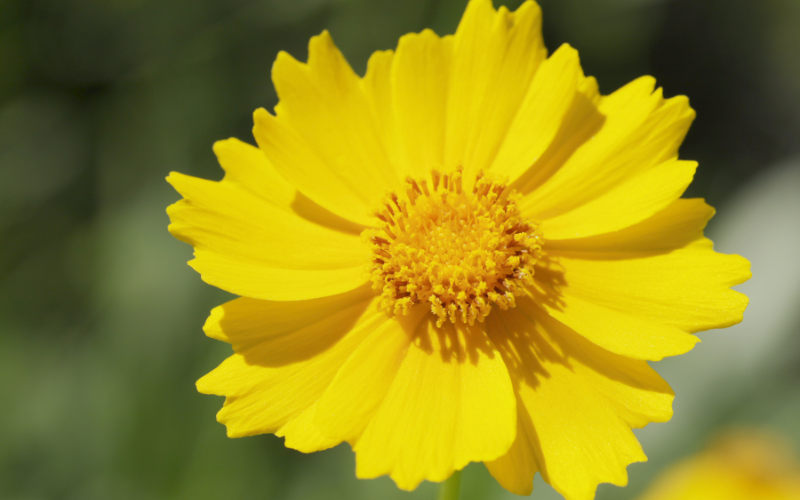
Tickseed (Coreopsis pubescens) is a stunning flower. It is native to various regions of North America. It typically blooms from late spring through the summer. The flowers usually reach a height of about 1 to 2 feet (30 to 60 centimeters).
Tickseed (Coreopsis pubescens) is well-suited for naturalistic or wildflower gardens. It thrives in well-drained soil and prefers full sun to light shade.
| Scientific Name | Coreopsis pubescens |
| Native Range | central and southeastern United States |
| Flowering Season | Late spring to early summer |
Thymus quinquecostatus
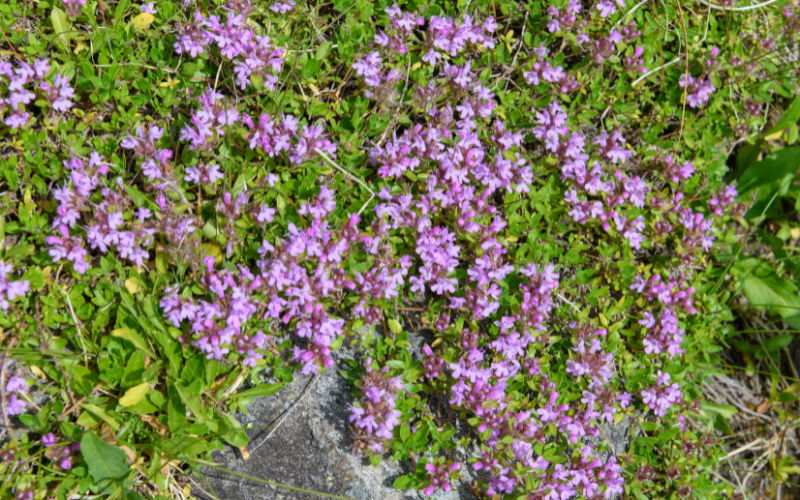
Thymus quinquecostatus is a charming flower. It is commonly known as “Five-ribbed Thyme.” It is native to China. The plant produces tiny, tubular flowers that are typically pink to lavender in color.
It is typically blooms in late spring to early summer. It prefers full sun to partial shade. It thrives in well-drained soil and can tolerate drought once established.
| Scientific Name | Thymus serpyllum subsp. quinquecostatus |
| Native Range | Mongolia to Japan |
| Flowering Season | Late spring to early summer |
Question & Answer
What is the world’s heaviest flower?
The world’s heaviest flower is the Rafflesia arnoldii.
What flower blooms at night?
A few examples of flowers that bloom at night are Night-Blooming Jasmine, Evening Primrose, Moonflower, and Night-Blooming Cereus.
What is a healing flower?
The healing properties of flowers are primarily based on traditional beliefs and practices.
Which flower has no smell?
The Celosia flower, commonly known as cockscomb, is an example of a flower that typically has no noticeable scent.
What is the most favorite flower in the world?
Roses are often considered the most classic and beloved flowers.
